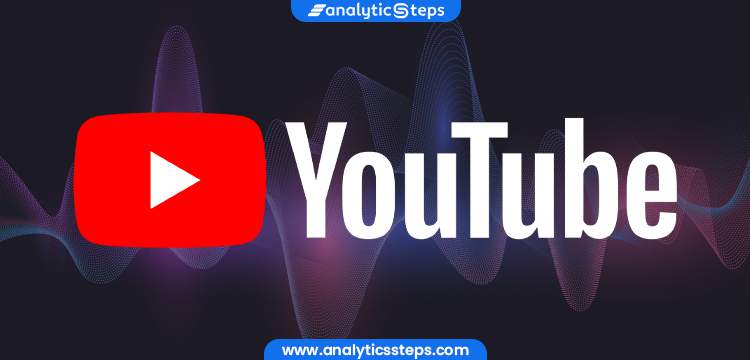Youtube reveals a series of innovative audio features
Oct 09, 2021 | Shaoni Ghosh

On Thursday, YouTube unveiled a series of innovative audio options, some of which have already gone into effect and others that will be available in the coming months.
To enable streaming to be more accessible, producers may now activate live auto-captions for all live feeds in English beginning today. Earlier, this functionality was only offered to authors with over 1,000 subscribers.
On Thursday, YouTube unveiled a series of innovative audio options, some of which have already gone into effect and others that will be available in the coming months.
To enable streaming to be more accessible, producers may now activate live auto-captions for all live feeds in English beginning today. Earlier, this functionality was only offered to authors with over 1,000 subscribers.
The Upcoming Upgrades
Next month, YouTube seeks to broaden live auto-captions to all 13 approved captioning languages. English, Indonesian, Dutch, Korean, French, Italian, Russian, Japanese, Portuguese, Spanish, Turkish, German and Vietnamese are among the supported languages.
In addition, the firm is now experimenting with adding several audio tracks to videos in order to give multilingual media for foreign audiences as well as explanatory audio for people with sensory impairments.
(Must Check: YouTube tests AI generated video chapters & introduces new effects on videos)
Presently, only a minority of creators have access to the functionality. In the next quarters, YouTube focuses on making the function more widely available.
Later this year, YouTube will bring up auto-translation for subtitles in supported languages for Android and iOS as well.
For the time being, the functionality is only accessible on the platform's desktop application. Additionally, on Android and iOS, YouTube intends to enable its users to search via transcripts.
According to TechCrunch, YouTube is also working on new channel permissions in YouTube Studio that will allow the creators to outsource caption and subtitle production to someone they trust.
(Recommended Blog: Extracting & Pre-processing the YouTube Comments)
The functionality was originally introduced under the term "Subtitle Editor," and the firm has acknowledged that the deployment is taking longer than planned. YouTube says that it's working on the feature and will keep creators posted in the months ahead.
Reason to Feature
YouTube initially introduced auto-captions in 2010, and since then, it has strived to enhance and expand its availability. In 2018, YouTube Live introduced auto-captions. Many other platforms, including YouTube, are trying to upgrade to more captioning capabilities making their platforms more diverse and accessible.
TikTok, for example, brought auto-captions to its videos earlier this year, whereas Instagram, around the same time, introduced captions feature for its Stories.
In a community blog article, YouTube stated that enhancing access is a central objective for the firm, and they believe that these upgrades will help creators reach a larger audience.
Next month, YouTube seeks to broaden live auto-captions to all 13 approved captioning languages. English, Indonesian, Dutch, Korean, French, Italian, Russian, Japanese, Portuguese, Spanish, Turkish, German and Vietnamese are among the supported languages.
In addition, the firm is now experimenting with adding several audio tracks to videos in order to give multilingual media for foreign audiences as well as explanatory audio for people with sensory impairments.
(Must Check: YouTube tests AI generated video chapters & introduces new effects on videos)
Presently, only a minority of creators have access to the functionality. In the next quarters, YouTube focuses on making the function more widely available.Later this year, YouTube will bring up auto-translation for subtitles in supported languages for Android and iOS as well.
For the time being, the functionality is only accessible on the platform's desktop application. Additionally, on Android and iOS, YouTube intends to enable its users to search via transcripts.
According to TechCrunch, YouTube is also working on new channel permissions in YouTube Studio that will allow the creators to outsource caption and subtitle production to someone they trust.
(Recommended Blog: Extracting & Pre-processing the YouTube Comments)
The functionality was originally introduced under the term "Subtitle Editor," and the firm has acknowledged that the deployment is taking longer than planned. YouTube says that it's working on the feature and will keep creators posted in the months ahead.

jenkinscooper750
Jun 07, 2022BITCOIN RECOVERY IS REAL!!! ( MorrisGray830 At gmail Dot Com, is the man for the job ) This man is dedicated to his work and you can trust him more than yourself. I contacted him a year and a half Ago and he didn't succeed. when i got ripped of $491,000 worth of bitcoins by scammers, I tried several recovery programs with no success too. I kept on. And now after so much time Mr Morris Gray contacted me with a success, and the reward he took was small because obviously he is doing this because he wants to help persons like me who fell for crypto scam, and love his job. Of course he could have taken all the coins and not tell me , I was not syncing this wallet for a year, but he didn't. He is the MAN guys , He is! If you have been a victim of crypto scam before you can trust Morris Gray 10000000%. I thought there were no such good genuine guys anymore on earth, but Mr Morris Gray brought my trust to humanity again. GOD bless you sir...you can reach him via ( MORRIS GRAY 830 at Gmaill dot com ) or Whatsapp +1 (607)698-0239..